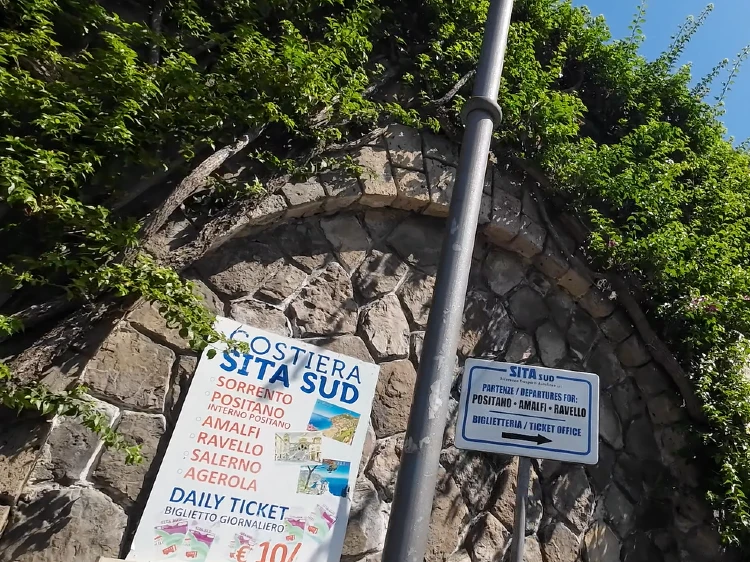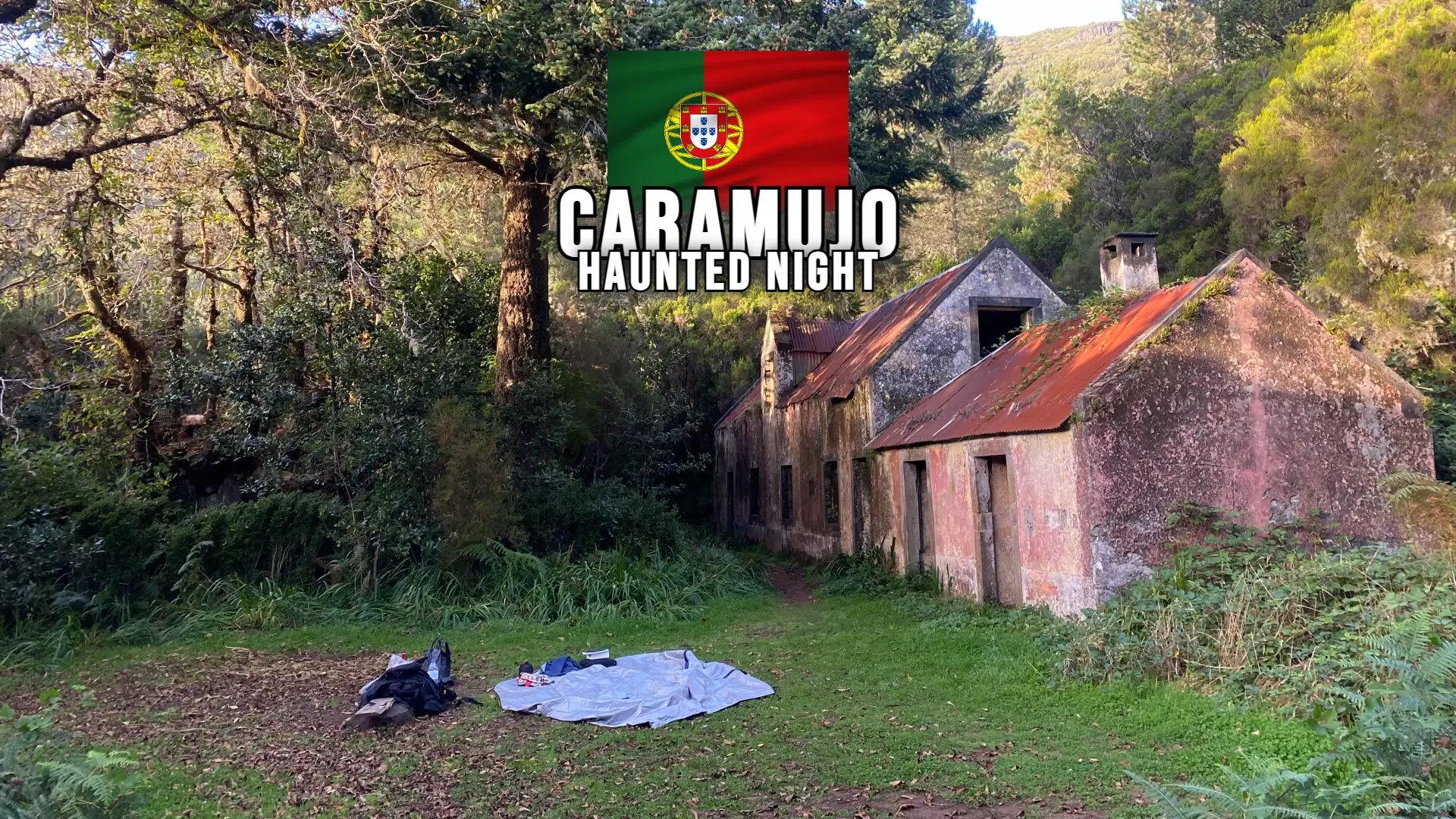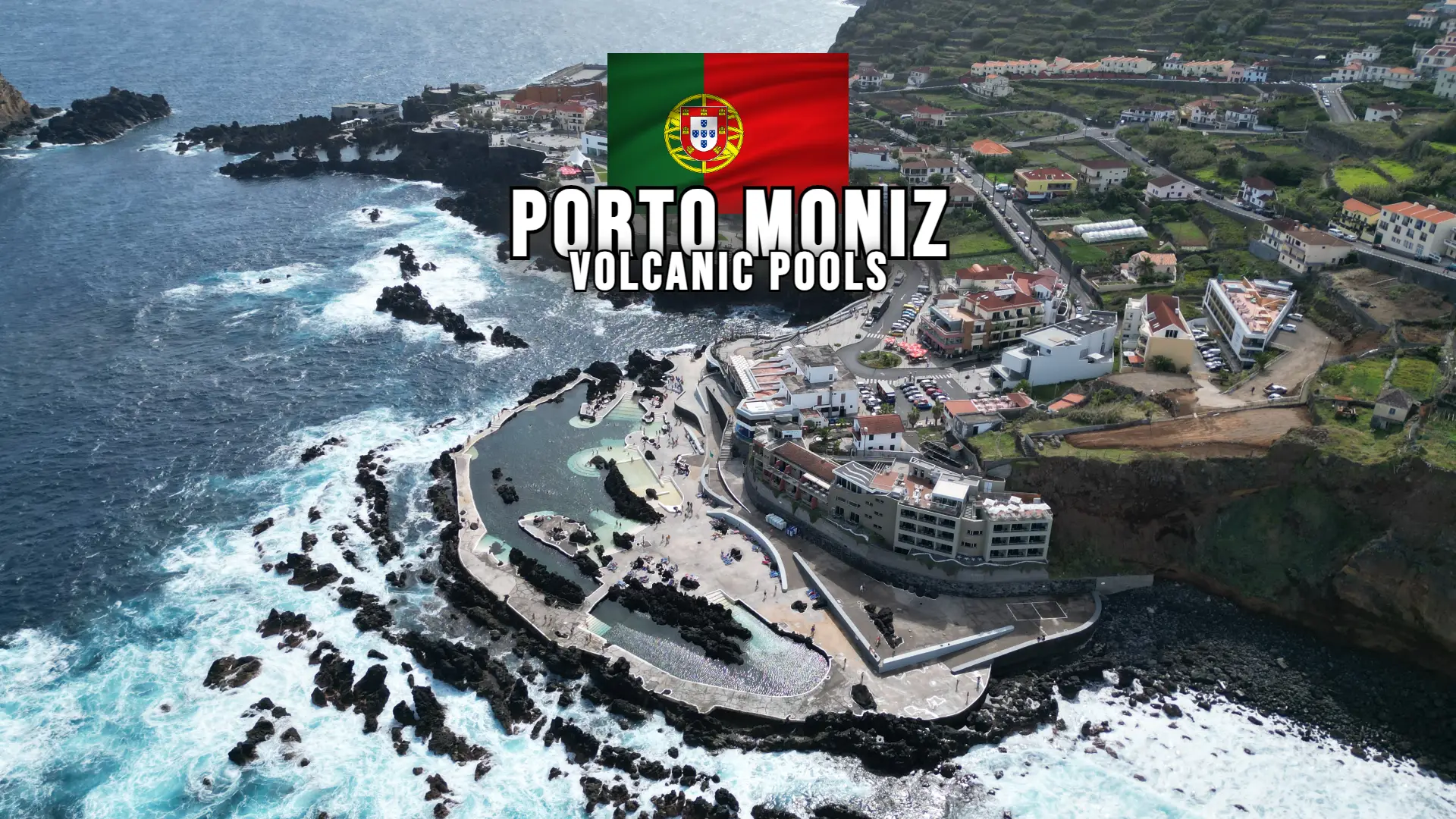Today is the day to visit Positano, one of the most popular places on the Amalfi Coast.
Just like the other days, we woke up and had breakfast at the Hotel Stabia. It was a delicious breakfast, with lots of options, bacon, fruit, toast, bread, cereals, yogurt, cakes and much more. I ate a lot that day because I knew it was going to be a long day.
Leaving the hotel, we went to Castellammare de Stabia train station to take the train to Sorrento.
Where to buy a bus ticket from Sorrento to Positano?
When you arrive in Sorrento, you should go to the bus stop just to the right of the station. On google maps it says to take the Mozzano bus down the street, which is wrong, this bus stop is no longer in operation. The ticket office for the bus from Sorrento to Positano is on the right-hand side of the Castellammare de Stabia train station. As soon as you leave the station, go to your right until you reach the end and you’ll see the ticket office.
At the ticket office you can buy a day ticket (biglietto giornaliero) for €10 and you can go from Sorrento to Positano, Amalfi, Ravello, Salerno and Agerola for 1 day, and return to Sorrento at the end of the day or when there are buses.

How long does it take from Sorrento to Positano?
The journey from Sorrento to Positano takes about 40 minutes in summer, when there is heavy traffic. There are 17km of mountain roads, which makes the journey a little slower in summer. We went to Positano on the 13:20 bus and arrived there at about 14:10, which was 50 minutes.
On the way from Sorrento to Positano you’ll see some of the most beautiful scenery to be found on the roads of the Amalfi Coast. You’ll pass cliffs on the edge of the mountains, and on the other side you’ll have small villages and the Mediterranean Sea. It’s an unforgettable part of the journey. If you can go by car or motorcycle, the trip becomes even more interesting, as there are viewpoints where you can park along the road, with incredible views to enjoy and take pictures of.
Make sure you don’t miss the bus stop in Positano. The bus may stop for a few people to get off, but don’t fall asleep, you’ll be there in about 30 to 40 minutes.
First impressions of Positano
Positano is situated on the rugged cliffs of the Amalfi Coast, overlooking the Tyrrhenian Sea. It is part of the Campania region in Italy and lies approximately 40 kilometers (25 miles) southeast of Naples.
When you get off in Positano, you come across that very common scene you see on the internet. I took the opportunity to take some photos of the scene and I’ll leave them below.
What can you say about Positano? It’s a beautiful, paradisiacal, incredibly beautiful and picturesque place. Any photo you take here will be a good one. As soon as you arrive, you have a view of the little houses on the other side of the mountain, the marina and some very romantic tables for two, like the ones in the photo:
There are several boats arriving and leaving the marina, many of them going to Amalfi, Capri, Sorrento and Napoli. On the right hand side there are some colorful houses, very tidy and with very clean streets. Some of these houses are local lodgings, so you can stay in some of them, but the demand is very high, so you have to book in advance, and the price is a bit expensive, but it’s worth it.
On this same street there are also several ceramists’ stores selling ceramics – after all, it is one of the region’s specialties to make ceramics. But not just any ceramics, these in particular are produced in a unique style called Majolica. It’s a style of ceramics that you’ll notice in Positano and it stands out from the rest. The pieces are very colorful and well crafted. It’s worth buying one as a souvenir to decorate your home.
Going down Positano’s main street, you’ll come across several cars going in one direction, so be careful not to get hit, at least I didn’t see any problems, but it’s worth being careful. Go down until you find an open square on your right, with several people there waiting for transportation, and this is where you really begin to enter Positano. As you walk through the narrow streets, you’ll notice the details of the town. The walls are very well painted, the construction details are unique, you can see art all over the town, paintings, handicrafts and artists are everywhere, but all in a very controlled way so that you don’t get harassed by them trying to sell you something, like in Paris, for example.
I saw a lot of flowery streets, vibrant summer colors, yellow, pink, red, orange, colors that visually mark the city and give it a very interesting aesthetic appeal.
Church of Santa Maria Assunta in Positano
Continuing downhill, you will come to a fork in the road, take a right where you will see the famous Chiesa di Santa Maria Assunta di Positano, a very important monument historically for the town. The main church in Positano, Chiesa di Santa Maria Assunta, is known for its iconic majolica-tiled dome. Inside the church, visitors can find notable artworks, including a Byzantine-era icon of the Black Madonna.
After passing the church and going down the stairs, you take your left through the alleys, there’s a little shop on the right. I couldn’t resist buying a cake that looked delicious to the eye and it really was very good. Keep going straight ahead and you’ll come to Piazza Amerigo Vespucci.
The ceramics of Positano
The ceramics of Positano are an integral part of the local artistic tradition and craftsmanship. The region is renowned for its production and intricately designed ceramics, which are highly sought after by visitors and collectors alike. Here are some aspects of Positano’s ceramic art:
- Majolica Tradition: Positano follows the majolica tradition, a style of pottery that involves a unique process of glazing and firing. Majolica ceramics are known for their bright colors, intricate patterns, and glossy finish.
- Colorful Designs: The ceramics of Positano often feature vivid colors such as blues, yellows, greens, and reds. The designs are inspired by the natural beauty of the Amalfi Coast, incorporating elements like sea life, lemons (a local specialty), flowers, and geometric patterns.
- Hand-Painted Craftsmanship: Much of the ceramic work in Positano is done by skilled artisans who hand-paint each piece. This traditional method allows for a high level of artistry and individuality in each creation.
- Local Artisan Shops: Visitors to Positano can explore numerous artisan shops and boutiques that specialize in ceramics. These shops offer a variety of handcrafted items, allowing tourists to bring home a unique piece of Positano’s artistic heritage.
- Ceramic Workshops: Some workshops in Positano provide visitors with the opportunity to experience the art of ceramics firsthand. Tourists can participate in workshops to learn about the traditional techniques, try their hand at painting ceramics, and gain a deeper appreciation for the craft.
The Architecture of Positano
The architecture of Positano is a key element of its unique and picturesque character. This coastal village on the Amalfi Coast in Italy is known for its charming and distinctive architectural features. Here’s a closer look at the architecture of Positano:
- Cliffside Construction: Positano’s most striking architectural feature is the way the buildings are constructed on steep, terraced cliffs. The village appears to cascade down the cliffs, with colorful houses seemingly stacked on top of each other. This arrangement allows for magnificent views of the Mediterranean Sea.
- Pastel-Colored Houses: The buildings in Positano are typically painted in soft, pastel colors. These hues include shades of pink, peach, yellow, and terracotta, which contrast beautifully with the blue waters of the sea and the lush greenery of the surrounding landscape.
- Majolica Tiles: Majolica tiles are a prominent architectural element in Positano. These ceramic tiles are often used to decorate the exteriors of buildings, creating intricate and colorful patterns. The use of majolica tiles adds to the village’s vibrancy and visual appeal.
- Narrow, Winding Streets: The streets of Positano are known for their narrowness and winding paths. This layout is a result of the village’s hilly terrain and adds to its unique charm. Visitors can explore these picturesque streets, often lined with bougainvillea, and discover hidden nooks and crannies.
- Staircases: Given the steep nature of the cliffs, many streets in Positano are interconnected by staircases. These staircases can be quite ornate, with hand-painted tiles and decorative elements, making them an integral part of the architectural landscape.
- Churches: Positano is home to several churches, with Chiesa di Santa Maria Assunta being the most famous. This church features a striking majolica-tiled dome and serves as a focal point in the village’s architecture. The interiors of these churches often showcase traditional religious art.
- Boutiques and Artisan Shops: The architectural aesthetic extends to the shops and boutiques in Positano. These establishments often have colorful facades and visually appealing displays of ceramics, fashion, and local products.
- Balconies and Terraces: Many buildings in Positano have balconies and terraces that offer breathtaking views of the sea. These outdoor spaces are often adorned with potted plants and flowers, creating cozy and inviting spots to relax and take in the scenery.
- Integration with Nature: The architecture of Positano is closely integrated with the natural environment. Buildings often incorporate the use of local stone, and the layout of the village seeks to harmonize with the surrounding cliffs and vegetation.
How much a pizza in Positano?
We arrived in Positano at around 2:10 p.m. and we were hungry, after all, we had walked around the town a lot. Walking around and seeing some pizzas, we immediately felt hungry. There were pizzas on display and for the price, it was worth getting a couple of pieces to eat.
A slice of pizza cost €5.50. I got a pizza with fresh cheese, the one in the photo below, the girl warmed it up a bit and it was delicious and well worth it! A whole pizza costs around €18, serving just one person. We sat on one of the staircases next door and it was the typical scene of eating pizza in the Italian streets. The pizza is very good and the taste is indescribable, really, good pizza should be eaten in Italy.
The beaches of Positano
Positano has beautiful beaches, including the main beach known as Spiaggia Grande. There is also a private beach to the right. Visitors can relax on the sandy shores and enjoy the Mediterranean sun.
The beaches are framed by colorful umbrellas and surrounded by cafes and restaurants, creating a delightful seaside atmosphere.
After a pizza lunch, I decided to go to the beach, the famous Spiaggia di Positano. The sand is very hot and I almost burnt my feet, so I had to wear sandals. The beaches are very crowded, lots of people, but it’s still fun and beautiful. The water is warm, typical of the Mediterranean, it reminds me of the beaches in Brazil. One thing I noticed is that the salt content of the water is very high, and after getting out of the water you can feel the salt on your body, even in your hair.
After the beach, I walked around the village a bit to get to know the town and I’ll leave you with some photos I took. Positano is full of small streets, up and down, lots of stairs. But it also has some of the most beautiful scenery on the Amalfi Coast and is worth every second spent there.
Finally, we took the bus back to Sorrento. Please note that the bus goes uphill and doesn’t get off in Positano; you have to return to the starting point where you got off in Positano. In summer the bus runs
We arrived in Sorrento around 9:30 p.m. and took the last train from Sorrento to Castellammare di Stabia.
When we arrived in Castellammare, we went to the hotel, Ingrid took a shower while I went to buy two cones and a ham and pistachio pizza. That pizza was good. There’s a saying in Brazil: I put my hunger together with my desire to eat, and that’s exactly what happened, I was starving and with 2 cones of pizza and a giant ham and pistachio pizza, we ate a lot that night.









